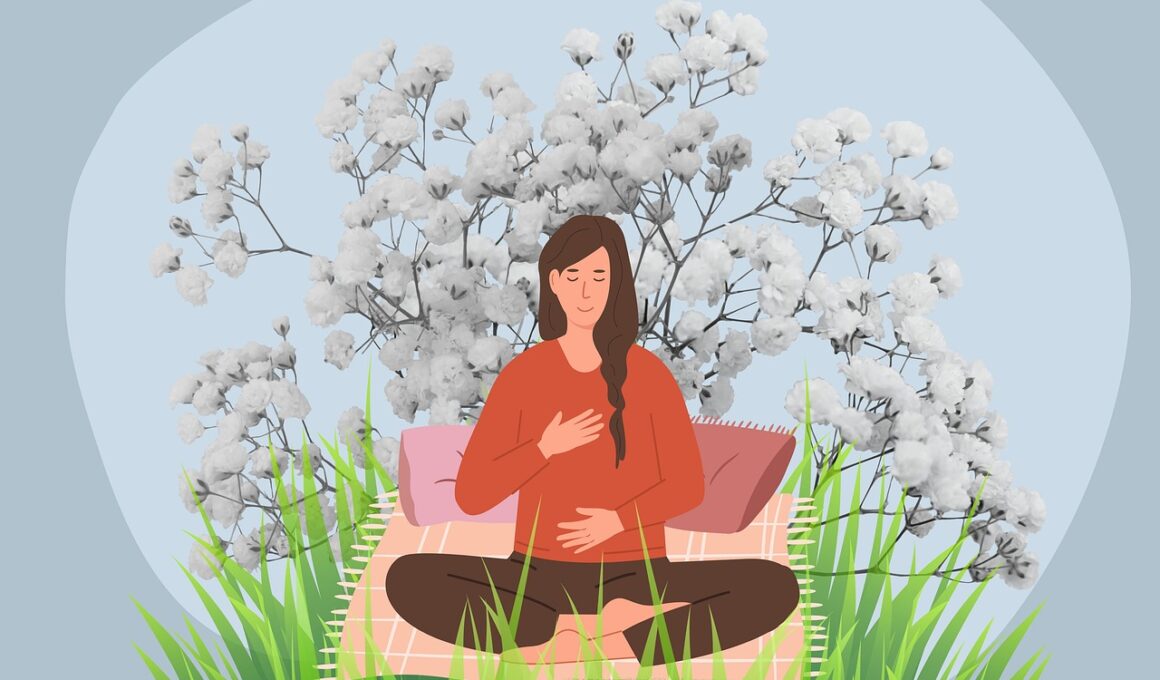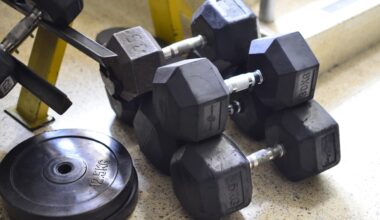How to Improve Your Breathing Technique by Avoiding Common Errors
Breathing is an essential function that many people take for granted, but it can be easily hindered by common mistakes. Understanding these pitfalls can lead to improved performance in various physical activities and overall health. One common mistake is shallow breathing. Many people unconsciously breathe only into their upper chest, which limits oxygen intake. To improve, focus on using your diaphragm, breathing into your belly instead. This deeper breathing technique not only enhances oxygen flow but promotes relaxation too. Another prevalent issue is holding the breath in stressful situations. When faced with anxiety or exertion, avoid the reflex to stop breathing. Instead, practice maintaining a steady airflow. Additionally, remember to exhale fully. Many individuals do not fully release the air from their lungs, causing stale oxygen to linger. A conscious effort to exhale completely ensures fresh air intake. Lastly, pay attention to your posture. Slouching can compress your lungs and airways, restricting airflow. Maintain an upright posture to facilitate better breathing efficiency. By being mindful of these errors, you can greatly enhance your overall breathing technique.
Identifying Other Common Mistakes
Apart from shallow breathing, numerous other mistakes affect the quality of your breath. One common error is the use of mouth breathing, which can lead to dry airways and reduced efficiency. Whenever possible, breathe through your nose, as it acts as a natural filter, humidifying and warming the air before it reaches your lungs. Furthermore, avoid the habit of breathing too quickly, as this can lead to hyperventilation. Maintaining a steady pace in your breathing allows for better oxygen absorption and can keep you more relaxed. It could be beneficial to incorporate breathing exercises into your routine. Techniques like the 4-7-8 method, where you inhale for four seconds, hold for seven, and exhale for eight, promote calmness and improve lung capacity. Finally, practicing mindfulness while breathing can cultivate a greater awareness of your techniques. Pay attention to how you feel physically and emotionally while you breathe. This awareness allows for adjustments in real-time, helping to avoid frequent mistakes. By identifying and correcting these additional issues, you can significantly enhance the efficiency of your breathing.
When attempting to improve your breathing, it is essential to track your progress regularly. Keeping a journal of your breathing patterns and any issues you encounter can help you identify specific triggers or mistakes. Note when you feel the most tension or constriction in your breathing and what activities or situations led you to those feelings. Over time, you may discover trends that point to habitual errors that you can work to eliminate. This reflection can guide your practice effectively. It is also advisable to seek outside help, such as breathing coaches or classes focused on proper technique. Expert guidance can provide you with personalized feedback and tailored exercises that target your unique breathing issues. You can also learn about additional techniques that you may not be familiar with yet. Alongside professional support, joining a community dedicated to improving breathing practices can also be beneficial. Sharing experiences and knowledge with others can amplify your learning process. Ultimately, committing to a systematic approach in reviewing your breathing and making necessary adjustments will dramatically improve your overall technique.
Practical Exercises for Better Breathing
Incorporating specific exercises into your daily routine can effectively help you avoid common breathing mistakes. One valuable exercise is the “diaphragmatic breathing” or “belly breathing,” which promotes deeper breaths. To engage in this practice, lie down on your back with knees bent and place your hands on your abdomen. Inhale deeply through your nose, feeling your stomach rise as you expand your diaphragm. Exhale slowly through your mouth and feel your stomach fall. Repeating this process for a few minutes daily can strengthen your diaphragm and enhance your awareness of proper breathing techniques. Another beneficial exercise is the “box breathing technique.” This involves inhaling for four counts, holding for four counts, exhaling for four counts, and holding again for four counts. This technique not only promotes steady airflow but also calms the mind. Moreover, consider incorporating yoga into your routine. Yoga encourages fluid breathing while enhancing flexibility, which can further promote better posture and air intake. Like other exercises, the more you practice, the more natural these techniques will feel during daily activities.
It is important to remember that consistency is essential when working to improve your breathing technique. Setting specific goals can motivate you to stay committed to your practice. Aim to practice your chosen breathing exercises at the same time every day to create a routine. Consistency allows your body to adapt and respond positively over time. However, it is also crucial to be patient with yourself. Change will not occur overnight, and you may encounter challenges along the way. Do not become discouraged by automatic breathing habits that are deeply ingrained. Celebrate small victories, whether that’s recognizing a mistake earlier or noticing improvements in your breath control during physical activity. Moreover, ensure that you are mindful of your environment. Stressful or chaotic settings can influence your breathing negatively. Whenever possible, create calming spaces dedicated to your breathing practices. Introducing calming elements like soothing music or aromatherapy can enhance relaxation and focus. Regularly refocusing on your goals and creating an optimal environment will facilitate the ongoing improvement of your breathing technique.
Developing Long-Term Habits
Long-term success in improving your breathing technique hinges on developing healthy habits that promote good breathing practices. Educate yourself about effective methods and continually reinforce positive techniques through repetition. Integrate reminders into your schedule, perhaps using technology, like alarms or apps dedicated to breathing. Regular check-ins can keep your awareness heightened and ensure you stay on track with your goals. Furthermore, practicing mindfulness, not only during specific exercises but throughout the day, can encourage continuous improvement. Always remember to check in with your breath when sitting at your desk or engaging in conversations, particularly during stressful moments. With time, these habits can become second nature, significantly enhancing your breath’s efficiency. It can also be effective to share your journey with others. Engage trusted friends or family in your practice, discussing your goals and daily experiences. The sense of accountability can encourage ongoing progress. Additionally, evaluating your journey periodically can help recognize overall trends that lead to successes or setbacks, allowing you to adjust your tactics. These long-term strategies will cultivate sustainable progress in the way you breathe.
Improving your breathing technique involves a multifaceted approach that requires diligent practice and self-awareness. By being mindful of common mistakes, tracking your progress, and incorporating effective exercises, you can enhance your overall breath quality greatly. It is essential to remain patient and resilient while you navigate through the phases of improvement. Consistency is key; making time for regular practice will reinforce good habits while allowing you to realize the advantages associated with better breathing. Remember, communication and sharing experiences with others can also significantly enhance motivation and accountability. It can energize your efforts as you embark on this personal journey. Ultimately, the goal is not just to breathe better but to feel better in your daily life by maximizing oxygen intake and establishing a calm state of mind. In this pursuit, keep your body and environment in mind, as they both influence your breath. Through continual focus and adaptation, you’ll cultivate a breathing practice that supports a healthy lifestyle and enriches both physical and mental dimensions of your life.
In summary, mastering your breathing technique is essential for achieving optimal performance and well-being. By avoiding common errors, practicing mindfulness, and committing to ongoing education, you can enhance your quality of life. Make it a priority to engage in breathing exercises regularly, seek professional guidance if needed, and encourage yourself to remain patient throughout the process. Connecting with a supportive community can further bolster your journey, ensuring you remain motivated and accountable. As you reflect on your breathing experiences, take note of any changes you observe, both positive and negative, and be open to adjusting your approach. Through diligence and effective strategy development, you can cultivate a healthy, robust breathing pattern that benefits every aspect of your life. Ultimately, better breathing fosters physical vitality, emotional resilience, and greater overall well-being. Embrace this journey, and enjoy the transformative power of effective breathing techniques. Commit to improvement, and soon you will feel the benefits in various aspects, leading to a healthier, happier you.


